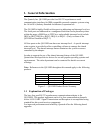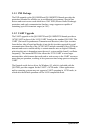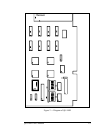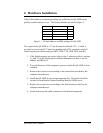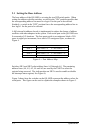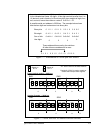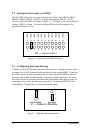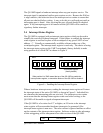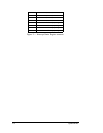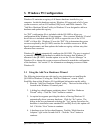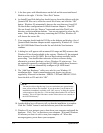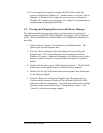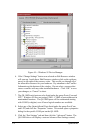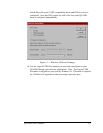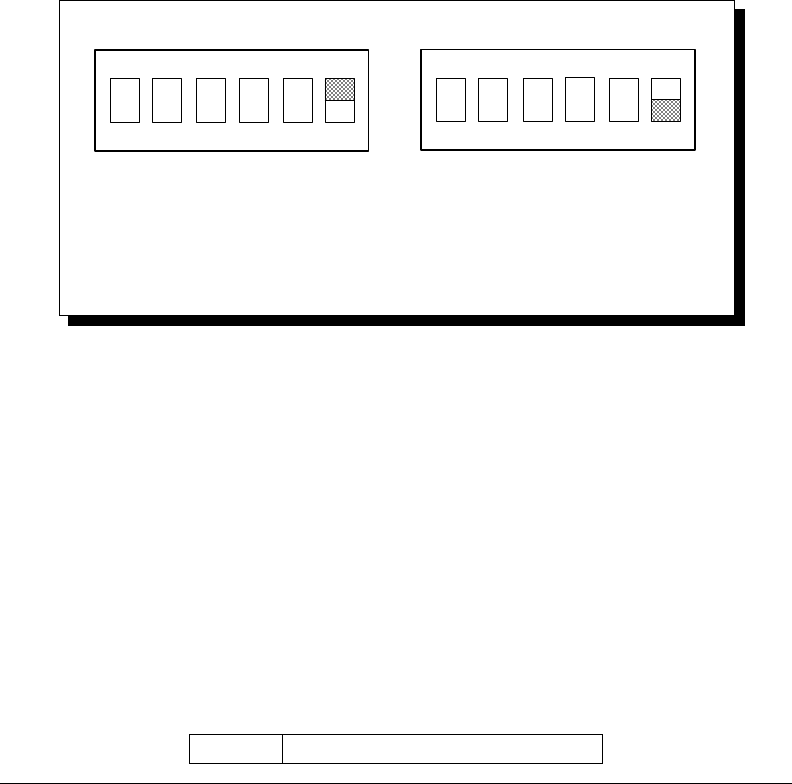
The QS-100D signals a hardware interrupt when any port requires service. The
interrupt signal is maintained until no port requires service. Because the ISA bus
is edge-sensitive, this behavior forces the interrupt service routine to ensure that
all ports are checked before exiting. A way to do this is to poll each port until an
interrupting port is found. After servicing the port, all ports should be checked
again. If any interrupting port is left unserviced the QS-100D will be unable to
signal any further interrupts.
2.4 Interrupt Status Register
The QS-100D is equipped with an interrupt status register which can be used to
simplify the servicing of shared interrupts. If this feature is enabled, the interrupt
status register is accessed in place of the scratchpad of any given UART at base
address + 7. Virtually no commercially available software makes use of the
scratchpad register. The interrupt status register is read-only. The choice of using
the interrupt status register or the UART scratchpads (factory default) is made
using position 6 of switch SW2 as shown in Figure 8.
ON
123456
SW2
ON
123456
SW2
Slide position 6 of SW2 toward the top of the QS-100D to enable the
interrupt status register, or toward the bottom of the QS-100D to disable it.
Scratchpad Register
(factory default)
Interrupt Status Register
Figure 8--- Enabling the Interrupt Status Register
When a hardware interrupt occurs, reading the interrupt status register will return
the interrupt status of the entire QS-100D, as shown in Figure 9. Individual bits
are cleared as the interrupting ports are serviced. The interrupt service routine
must ensure that the interrupt status register reads zero before exiting, or the
QS-100D will be unable to signal subsequent interrupts.
If the QS-100D is of revision level 'C' or higher, an I/O write to the interrupt
status register will cause another hardware interrupt to be generated if the
interrupt status register is non-zero. The value written is ignored and has no effect
on the contents of the interrupt status register. Software written to take advantage
of this retriggering will be transparent to an older revision of the QS-100D.
DESCRIPTIONBIT
QS-100D User's Manual 2-5



